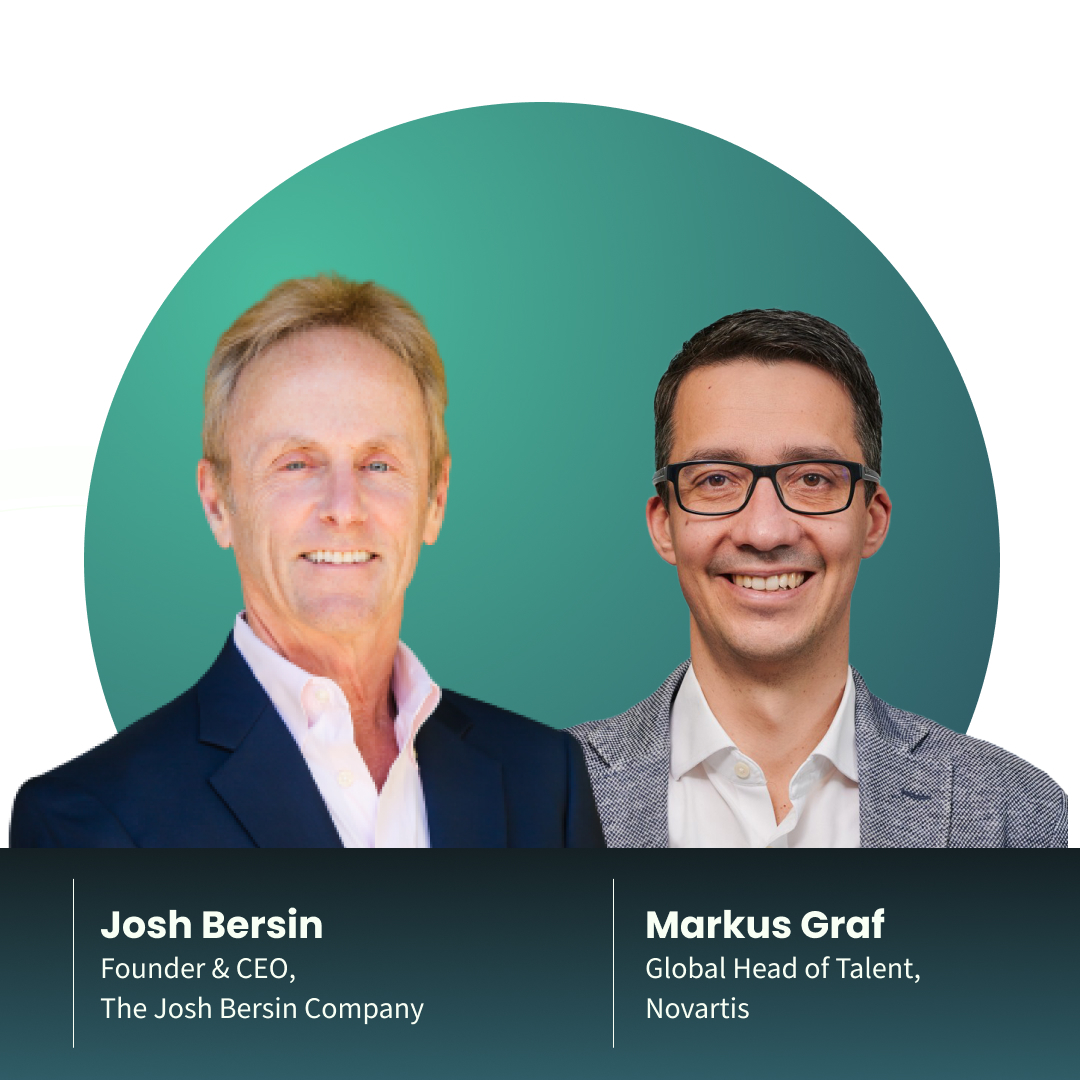Skills intelligence: the key to workforce planning
Why a complete understanding of workforce capabilities is a strategy game-changer By now, most leaders know skills shortages exist—because they’ve experienced them firsthand. What executives might not be aware of is just how dire these talent gaps are, with a shocking three out of four leaders acknowledging that they’re struggling to find candidates with in-demand

Why a complete understanding of workforce capabilities is a strategy game-changer
By now, most leaders know skills shortages exist—because they’ve experienced them firsthand. What executives might not be aware of is just how dire these talent gaps are, with a shocking three out of four leaders acknowledging that they’re struggling to find candidates with in-demand skills.
As organizations become more eager to put a stop to knowledge gaps once and for all, leaders are embracing new, skills-based approaches to workforce planning.
Unlike traditional workforce planning, skills-based tactics are rooted in workforce capabilities and how they can be strategically deployed across the organization.
With the help of skills intelligence tools, executives can now identify opportunities to shift and reallocate talent as new priorities emerge, as well as pinpoint transferable skills that can make employees strong candidates for roles they may never have considered otherwise.
What is a skills-based approach to workforce planning?
A skills-based approach to strategic workforce planning offers a framework for organizations to quickly adapt to changes, mitigate talent shortages, and unlock every employee’s full potential. It’s a systematic disciplined process for identifying and addressing gaps between current and projected workforce skills requirements.
While companies in the past could count on relatively stable market conditions to predict employee needs, those comforts don’t exist today. Workforce planning must now account for a myriad of factors, including shifting demographics, global supply chain disruptions, accelerated technological innovations, and evolving skill needs.
As a result, visionary organizations are taking new, dynamic approaches to workforce planning to ensure they have the skills they need. Unlike traditional, job-dominant approaches, skills-based workforce planning is about seeing your people for all the skills they possess—not just those that are relevant to their job title.
At organizations that practice skills-based workforce planning, leaders take stock of the knowledge their people have, often with help from AI-powered skills intelligence tools designed to capture these insights. Skills intelligence tools bring all of an organization’s skills data into one place, giving leaders a unified view of what skills exist and where they sit that updates automatically. Rather than making skills and job planning a manual process, skills intelligence tools make it easier to identify transferable skills and roles so leaders can strategically restructure and redeploy with confidence.
How to implement skills-based practices
According to research by Forbes, while 98% of companies indicate that they want to become skills-based organizations, only about one in five businesses are deploying people to open opportunities that align with their skills at enterprise scale. Here are three steps companies can take to begin implementing skills-based practices:
#1. Skills-focused talent acquisition
All too often companies spend big to hire externally when there’s someone with similar capabilities within their organization who can be upskilled or reskilled to fill the high-priority role. When organizations prioritize skills throughout their hiring process they can ensure they’re not overspending on talent acquisition and instead empowering their existing workforce to keep growing their skills with the business.
#2. Dynamic internal mobility
Rather than sticking to rigid job hierarchies, skills-based organizations empower employees to lend their capabilities to teams and projects in every area of the business. Companies that prioritize internal mobility enable their workforces to expand their skills, collaborate cross-functionally, and pitch in on projects across the organization. This approach also unlocks agility by enabling talent to be redeployed as priorities shift and new challenges emerge.
#3. Project-based work
When businesses break work down into projects, leaders can identify talent with in-demand skills from across their organization who will be the perfect fit for the work each task requires. Companies can in turn maximize productivity by encouraging employees to pitch in on various projects, rather than limiting their scope of work to whatever is outlined in their job description.
5 benefits of harnessing skills intelligence tools for workforce planning
There are 5 main reasons why skills-based workforce planning gives businesses a competitive advantage, especially when underpinned by skills intelligence tools.
#1. Unlock agility
When organizations take a skills-based approach to workforce planning, leaders recognize that employees will need to continuously hone new skills to keep pace with shifting demands and the accelerated speed of digital innovation.
By aligning workers to projects and tasks based on their competencies—rather than their job titles—skills-based organizations are better equipped to pivot and react to challenges in record time. This is particularly true for companies that use skills intelligence tools, like Gloat’s Skills Foundation. These systems can forecast which capabilities are on the rise and decline so leaders can evolve their upskilling and reskilling initiatives accordingly.
#2. Minimize silos
There’s no such thing as a rigid hierarchy in an organization that practices skills-based workforce planning. Instead, talent flows freely across the enterprise, in turn powering more frequent cross-functional collaboration and preventing knowledge from staying trapped within a specific department or team.
To take knowledge sharing to the next level, many companies are harnessing talent marketplaces that match employees to open opportunities based on their skills and interests. These systems use capabilities and capacity as the deciding factors to generate suggestions for projects, gigs, and full-time roles, which encourages employees to expand their horizons and work with colleagues in other parts of the business.
#3. Greater efficiency
When work is unboxed from jobs, employees are empowered to put their skills to use across their entire company, rather than working solely within the confines of their job description. Companies that practice skills-based workforce planning tend to be more productive because employees are encouraged to contribute to an array of projects and tasks, regardless of what functional area or team owns them.
As a result of this shift in perspective, skills-based organizations are 49% more likely to maximize efficiency when compared to their competitors who rely on job-dominant workforce planning tactics. With the help of skills intelligence tools, hiring managers and leaders can gain insight into the skills their people have and identify employees whose capabilities will make them a perfect fit for an open opportunity.
#4. Promote diversity and inclusion
Taking a skills-based approach to workforce planning removes many of the barriers that have traditionally held employees from underrepresented groups back. When hiring managers get recommendations for who to staff on a project based on their skills—not the names on their resumes or where they went to school—leaders can feel confident that they’re empowering workers from all walks of life to grow within the company. Overall, skills-based organizations are 47% more likely to provide a work environment that is inclusive to all employees.
#5. Avoid unnecessary hiring and recruitment costs
Organizations that take a skills-based approach to workforce planning avoid overspending on talent acquisition and recruitment. When companies make hiring decisions based on the skills their people possess and the capabilities they need, it prevents them from hiring for skill sets they already have.
By harnessing skills intelligence tools, leaders can identify employees who have transferable skills that will make them a good fit for a project or role, even if this opportunity lies outside of their domain. Rather than relying on external hiring to bridge knowledge gaps, skills-based workforces look within their organizations and excel at reallocating talent to respond to shifting needs.
Technology as an enabler
Technology is becoming the backbone for successful workforce planning. When the working world was predictable, HR could rely on more administrative systems because most of their talent management needs were repeatable and predictable.
However, now that we’re in a chapter of work that’s hallmarked by rapid digital innovations and ongoing economic uncertainty, businesses need a new generation of AI-powered tools designed to arm HR leaders with data-driven insights. By showcasing the capabilities an organization has and the potential knowledge gaps that are emerging, skills intelligence tools take a lot of the guesswork out of workforce planning and enable leaders to make more strategic talent management decisions.
Some skills intelligence tools like Gloat’s Skills Foundation even include job and skill benchmarking so executives can understand how their workforce’s expertise stacks up to their competition. HR leaders can also use the tool’s job architecture management system to keep roles and responsibilities updated and receive recommendations for relevant and trending skills that should be connected to various jobs.
The skills-based imperative: why it’s not an option
As talent shortages grow more severe and the half-life of learned knowledge continues to shrink, no company can afford to leave skills out of their workforce planning discussions. Instead, leaders must look to skills as one of the deciding factors in every talent management decision, from who they choose to hire to the employees they decide to reallocate.
Now that the rapid rise of AI is beginning to shift job and skill needs, it will be particularly important for HR leaders to harness skills intelligence tools to gain insight into the competencies their business needs, not only immediately but also to thrive in the long term.
To learn how one leading organization is mastering workforce planning with help from skills intelligence tools, check out this conversation with The Josh Bersin Company and Novartis’s VP of HR Markus Graf.





